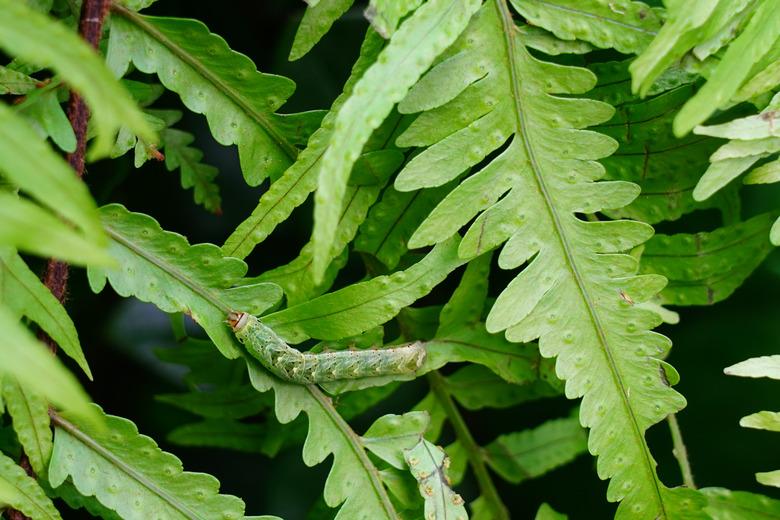Caterpillars Are Eating My Fern Plants
Ferns have been around for millions of years, gracing natural landscapes with their feathery fronds. In the United States, ferns decorate shady corners in gardens and woodland edges, but do attract some insect pests.
Caterpillars are among the pests of certain ferns, and may destroy a beloved plant. One species, the Florida fern caterpillar, has a distinct appetite for certain ferns, particularly those grown in greenhouses.
Fern Caterpillar Life Cycle
Florida fern caterpillars are the larvae of a distinctly patterned moth. The moth's forewings have a mahogany triangle on the outer margin and a pale chevron at the tip. The caterpillars reach 1 1/2 inches long and go through several instars, or stages. Newly hatched caterpillars start their lives green and go through instars that include brown and black, although some remain green for their entire lives.
Adult female moths lay many eggs — averaging over 400 — on young leaves and fiddleheads, which are the ferns' fronds before they unfurl. The larval stage lasts approximately 36 days. When they're finished feeding, the larvae drop to the soil to pupate.
Where the Caterpillars Come From
Although a tropical species, Florida fern caterpillars have been found living and feeding on ferns in greenhouses in colder climates, including in Michigan. Caterpillars don't tolerate cold winters and are believed to have traveled to these colder areas on infested fern plants.
Commercial growers of Boston fern (Nephrolepis exaltata), which grows outdoors in U.S. Department of Agriculture plant hardiness zones 8 through 11, and leatherleaf fern (Rumohra adiantiformis), which also grows in USDA zones 8 through 11, may unknowingly ship infested plants to garden centers and nurseries across the U.S.
Getting Rid of Fern Caterpillars
Hand-picking is the best solution to many caterpillar species infestations, but you might have too many, even on a single plant, to pick off. Bacillus thuringiensis (Bt), a natural, soil-borne bacteria, is among the most effective treatments for these caterpillars.
To use a Bt spray, dilute the concentrate in water, usually at a rate of 4 teaspoons of the product in 1 gallon of water. Check the label because rates may vary. Pour the mixture into a spray bottle or garden sprayer and spray all leaf surfaces on the ferns. Spray every 14 days until the caterpillars are gone. Bt must be present where the caterpillars will feed on it. Wear long sleeves and long pants when spraying and avoid breathing in the spray or getting it in your eyes.
Other Caterpillar Fern Pests
Other caterpillars will also bother ferns because the fronds make good pupating materials. Some leaf-tying caterpillars, for example, will tie together the leaves of ferns into a small, rounded chamber for feeding or pupating. Picking these caterpillars off will usually keep them under control.
